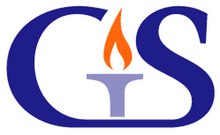Governor's School of North Carolina
| The Governor's School of North Carolina | |
|---|---|

Governor's School of North Carolina Logo
|
|
| Location | |
|
Winston-Salem, NC (GS West), Raleigh, NC (GS East), North Carolina United States |
|
| Information | |
| Type | Public boarding school |
| Established | 1963 |
| Oversight | North Carolina Department of Public Instruction, Exceptional Children Division |
| Directors | Rodney Allen (GS West), Laura Sam (GS East) |
| Faculty | 120 (approx) |
| Grades | 10–12 |
| Number of students | 650 (approx) |
| Campus | Salem College (GS West), Meredith College (GS East) |
| Website | www |
The Governor's School of North Carolina (GS, GSNC) is a publicly funded residential summer program for intellectually gifted high school students in the state of North Carolina. North Carolina's Governor's School was the first such program in the United States, and has given rise to similar programs for gifted students in many other states.
Governor's School enrolls approximately 600 students each summer, half each in programs housed at Salem College in Winston-Salem (known as Governor's School West, or GSW) and at Meredith College in Raleigh (known as Governor's School East, or GSE). Governor's School is a program of the North Carolina Department of Public Instruction.
Governor's School serves students in public, private, and home schools. Most students are rising seniors in high school, though students from some arts areas may be rising juniors. Students who attend Governor's School are nominated by their school or school system and selected on the basis of grades, test scores, an application essay and, for arts students, an audition. Students are accepted for a primary course of study, known as Area I, in which they will spend most of their class time. Area I disciplines include the following: academic areas of English, Spanish, French, mathematics, natural science and social science; artistic areas of art, choral music, dance, drama, and instrumental music. Each course emphasizes contemporary texts, compositions, artistic expressions, issues, and ideas in their respective disciplines. All students attend two additional areas of study outside of their primary area, not to mention countless optional and required seminars and performances. Area II courses cover a variety of questions and ideas from the epistemological branch of philosophy. In Area III classes, students attempt to ground what they are learning in their Area I and II classes in their own personal experience.
The program began in 1963 as an education initiative promoted by Gov. Terry Sanford and conceptualized by John Ehle, a member of his staff. The idea was based on educational principles concerning gifted education that were prominent in the 1950s. An early consultant in Governor's School's design and curriculum was Dr. James J. Gallagher, author of Teaching the Gifted Child (1951) and over 80 other works on gifted education. Dr. Gallagher's work emphasized the need for different educational methods for gifted students that were not available in public schools, and the importance of creativity and leadership as aspects of giftedness. The goal of Governor's School, therefore, was to advance the education of North Carolina's brightest students, with the goal of encouraging them to become gifted, creative leaders in all aspects of science, mathematics, art, sociology, and literature. This was done partially in hopes of challenging the technological advancements being made in the Cold-War era Soviet Union, but also with an eye to bringing corporations to North Carolina to provide jobs in emerging technologies such as computers, space exploration, telecommunications, and biomedical research.
...
Wikipedia
